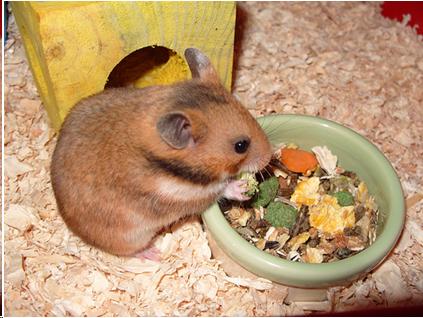Week 13: Rodents
Table of Contents
Text and Images from Slide
Rodent Diet
- Omnivores
- Rat
- Mouse
- Hamster
- Gerbil
- Herbivores
- Guinea pig
- Chinchilla
- Most of them practice coprophagy ? eat feces

Petal the hampster, by LuLu Witch / Flickr
Rodent Diet

Petal the hampster, by LuLu Witch / Flickr
The diet of rodents is dependent upon the species. Species such as rats, mice, and gerbils are omnivores (meaning they eat meat and plants), while guinea pigs and chinchillas are herbivores (meaning they only eat plants). We'll talk about the hamster in a few minutes. Almost all rodents practice coprophagy, or the act of eating feces. It might sound gross, but it represents an important aspect of their nutrition. Rodents have very developed hind guts, in which they can ferment plant materials producing some aminoacids and vitamins. The problem is that aminoacids and vitamins cannot be absorbed in the large intestine, therefore they eat their feces to ingest those newly formed nutrients that were not present initially in what they ate. It's important to understand that those are not nutrients that were not absorbed the first time they went through the intestine, but nutrients that were formed after the absorptive section of the intestine.